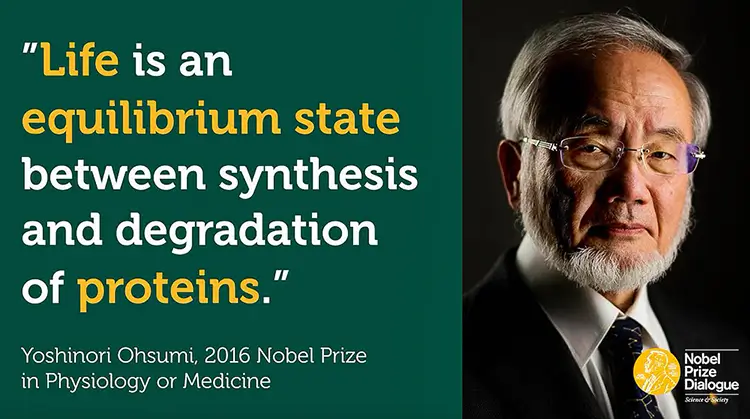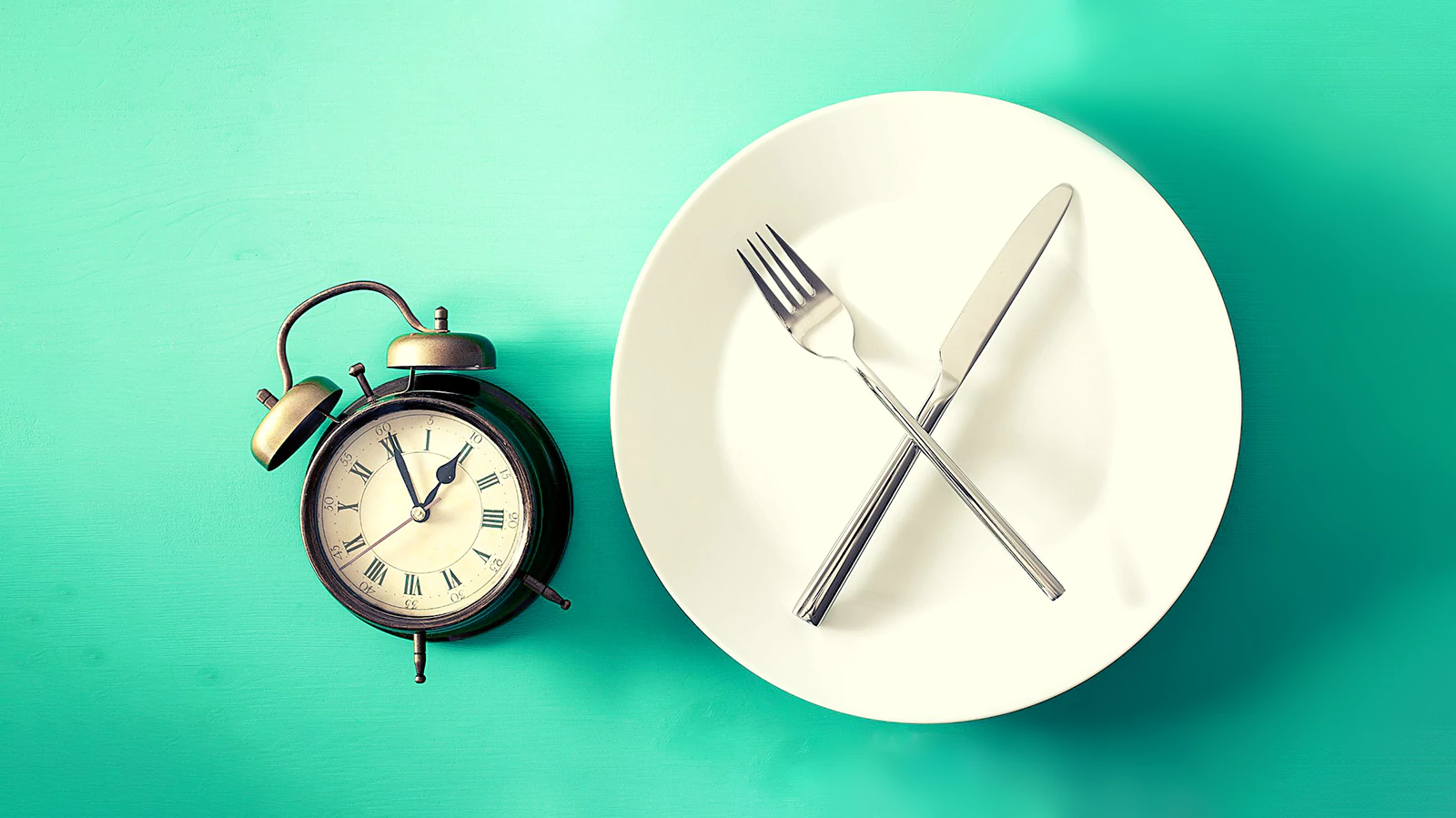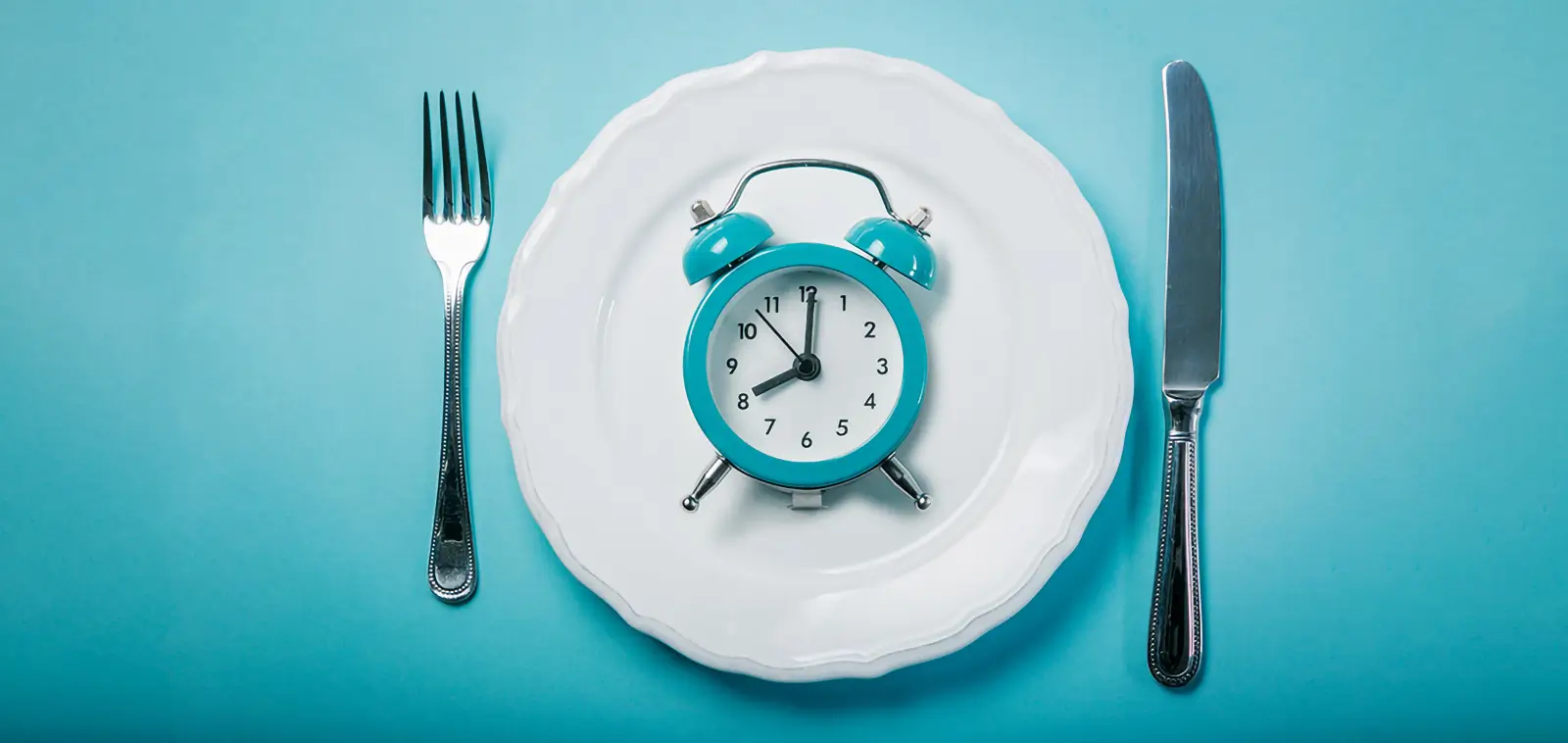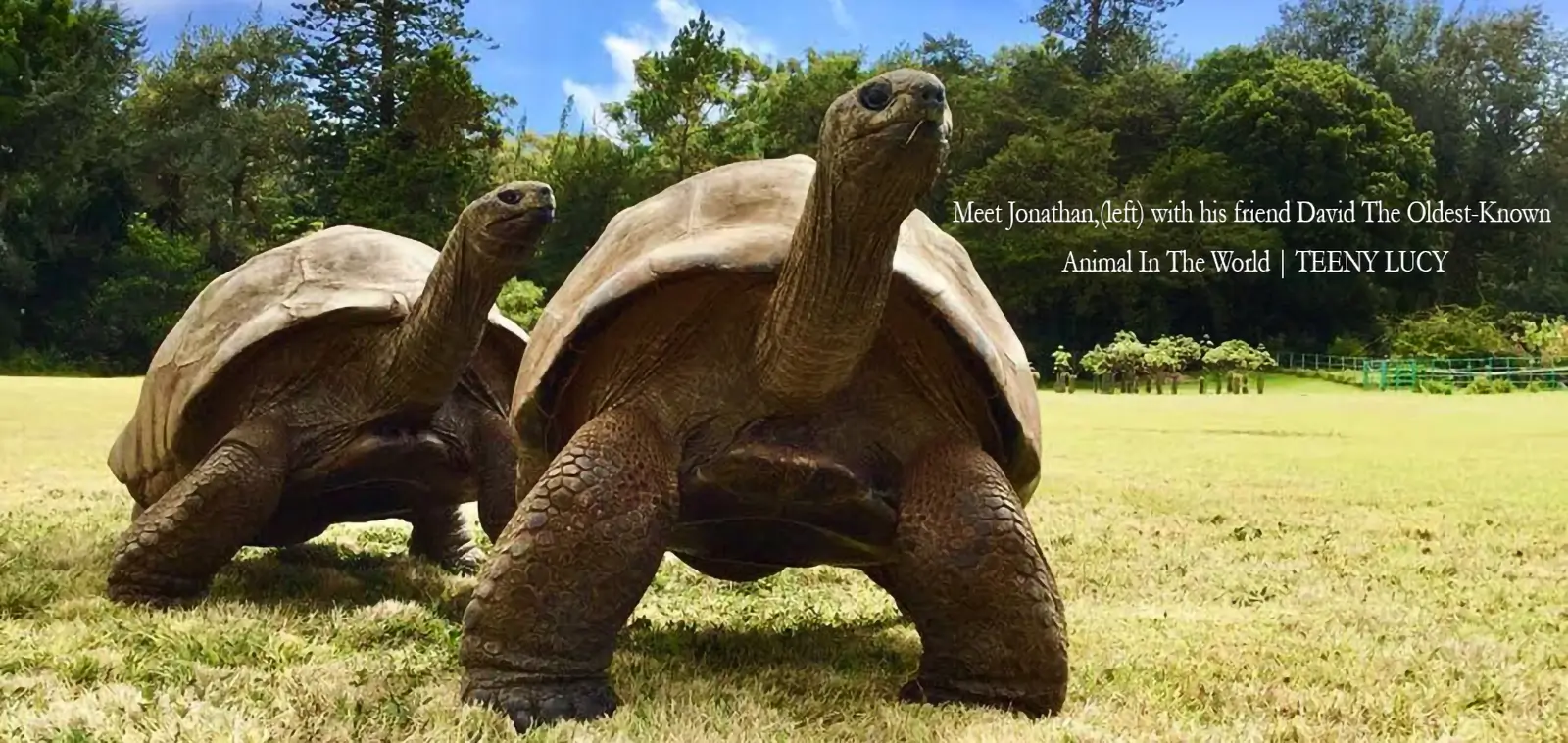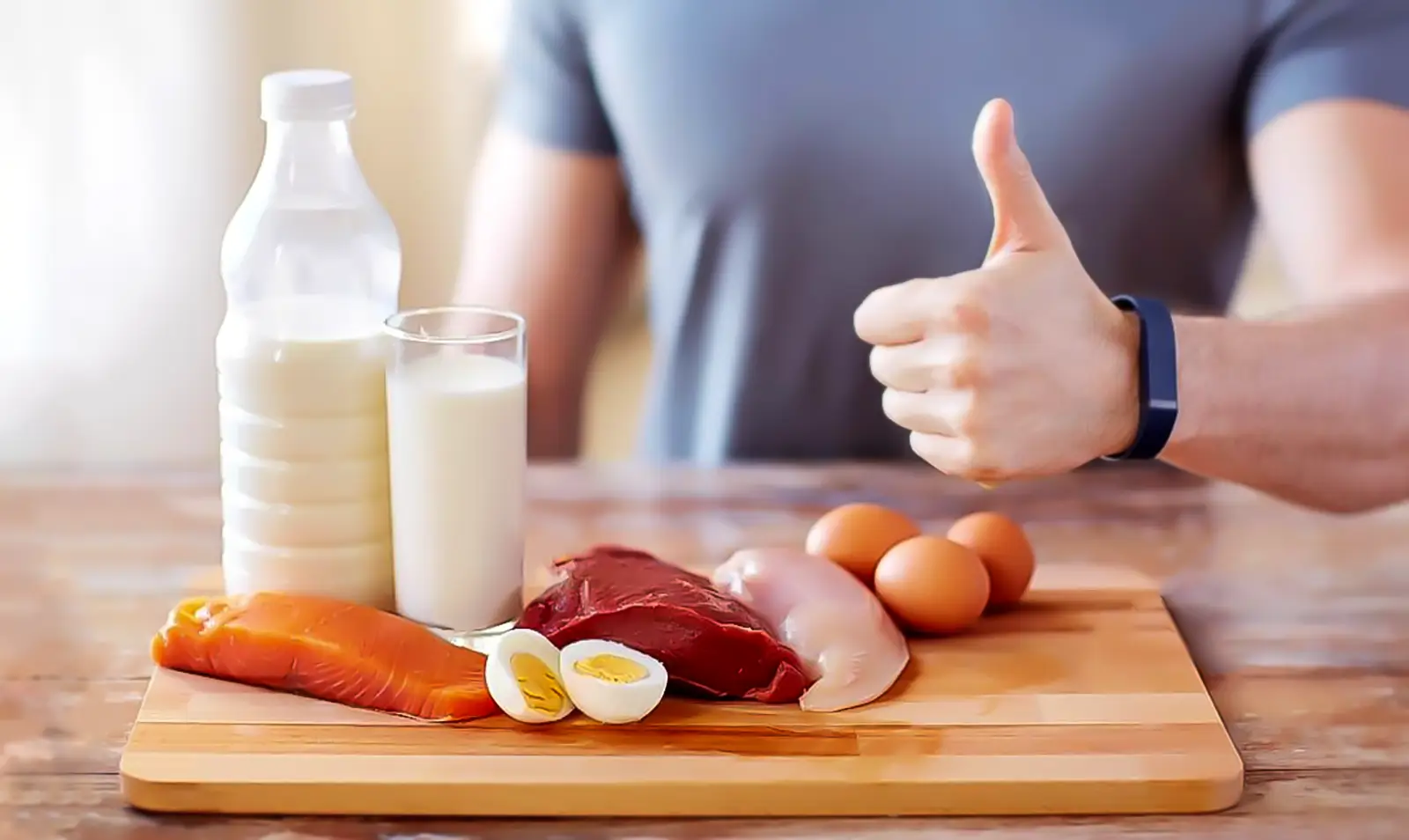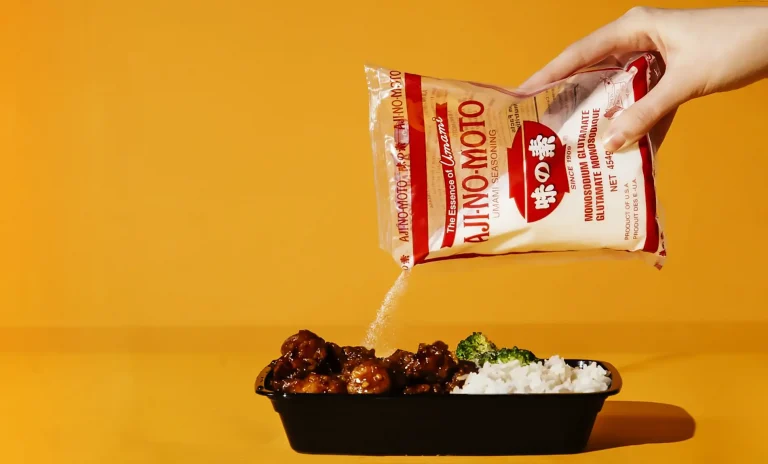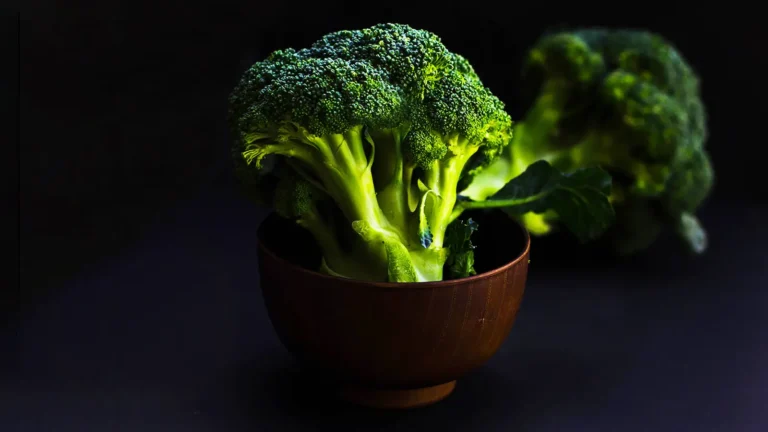Calorie restriction, Autophagy, Longevity, and Muscle loss
We all want a substantial amount of muscle mass and fast metabolism so that we can eat more but autophagy is what is in line with evolutionary biology.
Milos Pokimica
Written By: Milos Pokimica
Medically Reviewed by: Dr. Xiùying Wáng, M.D.
Updated June 9, 2023We want to have muscle mass as much as possible and a fast metabolism as much as we can so that we can eat more and don’t gain weight but evolutionary biology will again tell us what is healthy and it is not constant overeating on food. Animals in nature have a hard time finding food so a basic level of existence is an increased level of autophagy with intermittent fasting and calorie restriction. I am going to use a quote from the U.S. Department of Health & Human Services National Institute on Aging website:
“Since the 1930s, investigators have consistently found that laboratory rats and mice live up to 40 percent longer than usual and also appear to be more resistant to age-related diseases when fed a diet that has at least 30 percent fewer calories than they would normally consume. Now researchers are exploring whether and how caloric restriction will affect aging in monkeys and other nonhuman primates.”
We have a large number of human studies now (Fernández-Ruiz, 2017). The calorie restriction response exists in nearly all of the species tested to date and probably had evolved very early in the history of life on Earth as a mechanism to increase the chances of surviving periodic shortages. There is a difference between fasting and prolonged calorie restriction but the underlining mechanism is the same, and caloric restriction will prolong life expectancy much more than fasting periodically although even fasting periodically will have beneficial effects on longevity.
The benefits come from two main reasons. There are other benefits like:
- improved insulin sensitivity
- regulating inflammatory conditions in the body
- starving off cancer cell formation
- detoxifying
- improving eating patterns
- hormonal balancing.
However, there are two main reasons on a cellular level that underlines all of the other benefits that sprout out of these two.
Firstly, when we fast blood levels of insulin drop significantly, and blood levels of growth hormone may increase as much as 5-fold. Insulin and growth hormone play antagonistic roles against one another. When one is elevated, the other will be low. When we go to sleep we fast for 10 hours, insulin drops and HGH (human growth hormone) rises. When HGH rises we grow, especially if you are in puberty. HGH stimulates growth, cell reproduction, and cell regeneration. It is thus essential in human development.
Secondly, when we fast our cells initiate important cellular repair processes and change in which genes they express. We start to regenerate and allow for cleansing and detoxification of the body. One of the reasons why sick people have a low appetite is that there are in the process of intensive regeneration. In medical terms that regeneration is called autophagy.
In the ancient Greek word, “phagy” means eating and the word “auto” means self, so autophagy means literary self-eating. You self-eat yourself every day. When any cell in our body dies, it will not go to waste. What happens is recycling. Autophagy is a completely natural physiological method in the body that deals with the destruction of cells. It controls homeostasis or regular functioning by protein degradation and destruction and turnover of the destroyed cell organelles for new cell formation. During cellular stress (deprivation of nutrients) the process of autophagy is increased.
Autophagy has the ability to likewise also destroy the cells under certain conditions. There is a form of programmed cell death and there is autophagy-induced cell death. Two different types. Programmed cell death is commonly termed apoptosis. Autophagy is termed as non-apoptotic programmed cell death with different pathways and mediators from apoptosis. Also, this is the key to calorie restriction and fasting. If the cell is precancerous for example or damaged or mutated in any way autophagy cell death will help our body to clean itself.
After glycogen depletion, we will go into increased autophagy, and our body will lean heavily on amino acids and protein catabolism for energy creation. Amino acids will be used, and some of the muscle mass will be lost.
Moreover, it is a good thing.
Our organism is much smarter than we think. Our heart is the muscle too, but it would not be touched. First goes glycogen, then fat, then muscle then vital organs, and then we die from malnutrition. It is a brilliant plan to sustain life throughout hunger. If there is a “bad” cell and a “good” cell and some of the cells need to “go” for energy, first on the line is the bad cell. First on the line to get rid of are the parts of the system that might be damaged or old. The inefficient parts. The absence of autophagy is believed to be one of the main reasons for the accumulation of damaged cells, and this can lead to serious health complications. If we start severely damaged by chemotherapy or other toxins, fasting cycles can generate, literally, an entirely new immune system.
Exercise by itself is able to increase autophagy in a situation where autophagy already happens. The more intensive the exercise is, the more effective it will be. However, if we eat and work out the exercise alone would not be beneficial.
The fastest way to shut down autophagy is to eat high amounts of complete protein. What this will do is stimulate IGF-1 (Insulin-like growth factor 1) and mTOR (rapamycin), which are potent inhibitors of autophagy. IGF-1 (Insulin Growth Factor) is somewhat responsible for muscle growth. However, IGF-1 catastrophic side effect is cancer. It is best to limit protein to about 50 to 70 grams per day, depending on lean body mass. When we ingest large amounts of protein, our liver detects it, and the response is:
”Hey let’s grow stuff, we have all essential amino acids now.”
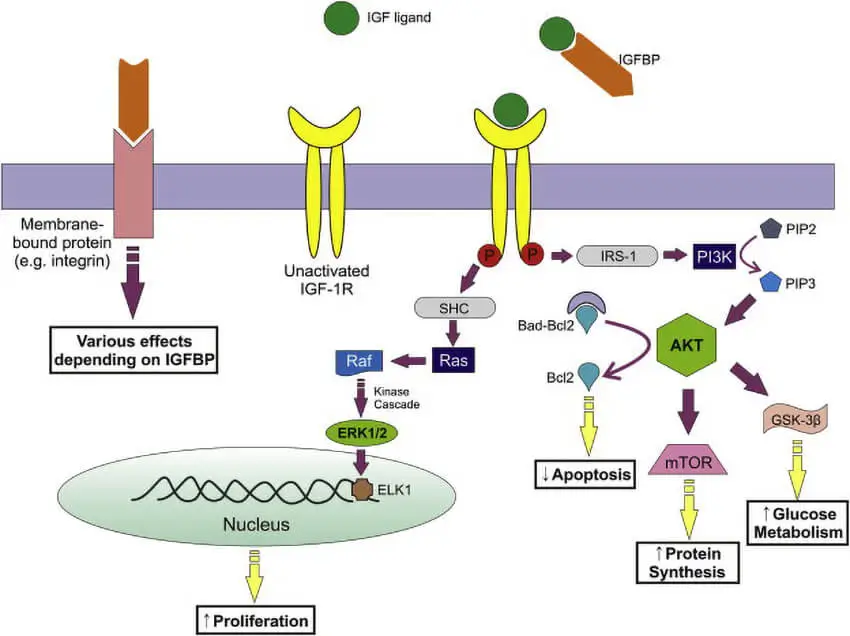
It starts pumping IGF-1. In the fasting state liver, GH (growth hormone) binding is decreased, so more of the GH is left in the bloodstream. In protein restriction, GH receptors are maintained but not for IGF-1.
To avoid loss of muscle during calorie restriction and dieting and to increase the benefit of calorie restriction the way to go is to do moderate resistance training. This will not prevent muscle loss but will be beneficial to some extent (Cava et al., 2017).
Another way is to avoid non-vegan food or in other words sources of “complete” protein in high amounts.
When we ingest an incomplete source of protein, meaning it lacks some of the essential amino acids, it will not signal the IGF-1 release at the same level. It is not just about the overall amount of protein consumed but also the source (Allen et al., 2002).
If you are vegan and you eat complete sources of protein like soy, you will negate the benefit. It is because of the protein profile. Vegans for instance that eat 7 to 18 servings of soy meals a day may end up with circulating IGF-1 levels that are relative to those who eat meat. That is because soy has complete protein. Some other plants have high-quality proteins too. The high consumption level of protein in the diet has other negative effects regardless. Also if your only goal is to prevent muscle mass loss during dieting and are not interested in longevity you will want to increase your protein intake.
The good news is that we can use autophagy to clean our genetic base, the bad news is that we do not do it anymore. In the past nature forced us by not providing enough resources. Today we eat regularly and even if we go hungry that will not last enough to deplete our glycogen stores.
References:
- Fernández-Ruiz I. (2017). Metabolism: Calorie restriction for healthy ageing. Nature reviews. Cardiology, 14(4), 190. https://doi.org/10.1038/nrcardio.2017.26
- Cava, E., Yeat, N. C., & Mittendorfer, B. (2017). Preserving Healthy Muscle during Weight Loss. Advances in Nutrition, 8(3), 511-519. https://doi.org/10.3945/an.116.014506
- Allen, N. E., Appleby, P. N., Davey, G. K., Kaaks, R., Rinaldi, S., & Key, T. J. (2002). The associations of diet with serum insulin-like growth factor I and its main binding proteins in 292 women meat-eaters, vegetarians, and vegans. Cancer epidemiology, biomarkers & prevention : a publication of the American Association for Cancer Research, cosponsored by the American Society of Preventive Oncology, 11(11), 1441–1448.[PubMed]
- Welton, S., Minty, R., O’Driscoll, T., Willms, H., Poirier, D., Madden, S., & Kelly, L. (2020). Intermittent fasting and weight loss: Systematic review. Canadian family physician Medecin de famille canadien, 66(2), 117–125.[PubMed]
- Zouhal, H., Saeidi, A., Salhi, A., Li, H., Essop, M. F., Laher, I., Rhibi, F., Amani-Shalamzari, S., & Ben Abderrahman, A. (2020). Exercise Training and Fasting: Current Insights. Open access journal of sports medicine, 11, 1–28. https://doi.org/10.2147/OAJSM.S224919
- Denduluri, S. K., Idowu, O., Wang, Z., Liao, Z., Yan, Z., Mohammed, M. K., Ye, J., Wei, Q., Wang, J., Zhao, L., & Luu, H. H. (2015). Insulin-like growth factor (IGF) signaling in tumorigenesis and the development of cancer drug resistance. Genes & diseases, 2(1), 13–25. https://doi.org/10.1016/j.gendis.2014.10.004
Related Posts
Do you have any questions about nutrition and health?
I would love to hear from you and answer them in my next post. I appreciate your input and opinion and I look forward to hearing from you soon. I also invite you to follow us on Facebook, Instagram, and Pinterest for more diet, nutrition, and health content. You can leave a comment there and connect with other health enthusiasts, share your tips and experiences, and get support and encouragement from our team and community.
I hope that this post was informative and enjoyable for you and that you are prepared to apply the insights you learned. If you found this post helpful, please share it with your friends and family who might also benefit from it. You never know who might need some guidance and support on their health journey.
– You Might Also Like –

Learn About Nutrition
Milos Pokimica is a doctor of natural medicine, clinical nutritionist, medical health and nutrition writer, and nutritional science advisor. Author of the book series Go Vegan? Review of Science, he also operates the natural health website GoVeganWay.com
Medical Disclaimer
GoVeganWay.com brings you reviews of the latest nutrition and health-related research. The information provided represents the personal opinion of the author and is not intended nor implied to be a substitute for professional medical advice, diagnosis, or treatment. The information provided is for informational purposes only and is not intended to serve as a substitute for the consultation, diagnosis, and/or medical treatment of a qualified physician or healthcare provider.NEVER DISREGARD PROFESSIONAL MEDICAL ADVICE OR DELAY SEEKING MEDICAL TREATMENT BECAUSE OF SOMETHING YOU HAVE READ ON OR ACCESSED THROUGH GoVeganWay.com
NEVER APPLY ANY LIFESTYLE CHANGES OR ANY CHANGES AT ALL AS A CONSEQUENCE OF SOMETHING YOU HAVE READ IN GoVeganWay.com BEFORE CONSULTING LICENCED MEDICAL PRACTITIONER.
In the event of a medical emergency, call a doctor or 911 immediately. GoVeganWay.com does not recommend or endorse any specific groups, organizations, tests, physicians, products, procedures, opinions, or other information that may be mentioned inside.
Editor Picks –
Milos Pokimica is a health and nutrition writer and nutritional science advisor. Author of the book series Go Vegan? Review of Science, he also operates the natural health website GoVeganWay.com
Latest Articles –
Top Health News — ScienceDaily
- Harvard gut discovery could change how we treat obesity and diabeteson December 14, 2025
Scientists found that certain molecules made by gut bacteria travel to the liver and help control how the body uses energy. These molecules change depending on diet, genetics, and shifts in the microbiome. Some even improved insulin response in liver cells when tested in the lab. The findings could open the door to new ways of preventing or managing obesity and diabetes.
- A grad student’s wild idea triggers a major aging breakthroughon December 14, 2025
Senescent “zombie” cells are linked to aging and multiple diseases, but spotting them in living tissue has been notoriously difficult. Researchers at Mayo Clinic have now taken an inventive leap by using aptamers—tiny, shape-shifting DNA molecules—to selectively tag these elusive cells. The project began as an offbeat conversation between two graduate students and quickly evolved into a collaborative, cross-lab effort that uncovered aptamers capable of binding to unique surface proteins […]
- Natural compound supercharges treatment for aggressive leukemiaon December 14, 2025
Forskolin, a plant-derived compound, shows surprising potential against one of the most aggressive forms of leukemia. Researchers discovered that it not only stops cancer cells from growing but also makes them far more vulnerable to chemotherapy by preventing them from pumping out the drugs meant to kill them. Experts say this dual action could help create safer, more powerful AML treatments with fewer harsh side effects.
- AI finds a hidden stress signal inside routine CT scanson December 14, 2025
Researchers used a deep learning AI model to uncover the first imaging-based biomarker of chronic stress by measuring adrenal gland volume on routine CT scans. This new metric, the Adrenal Volume Index, correlates strongly with cortisol levels, allostatic load, perceived stress, and even long-term cardiovascular outcomes, including heart failure risk.
- Tea may strengthen bones in older women while heavy coffee weakens themon December 13, 2025
A decade-long study of older women found that tea drinkers had slightly stronger bones, while moderate coffee drinking caused no harm. Heavy coffee intake—over five cups a day—was linked to lower bone density, especially in women who consumed more alcohol. Tea’s benefits may stem from catechins that support bone formation. The researchers say small daily habits could make a meaningful difference over time.
- The brain switch that could rewrite how we treat mental illnesson December 13, 2025
Scientists exploring how the brain responds to stress discovered molecular changes that can influence behavior long after an experience ends. They also identified natural resilience systems that help protect certain individuals from harm. These findings are opening the door to treatments that focus on building strength, not just correcting problems. The work is also fueling a broader effort to keep science open, independent, and accessible.
- Ozempic may offer a surprising bonus benefit for brain healthon December 13, 2025
A new analysis suggests that people with type 2 diabetes who use GLP-1 medications like Ozempic, Trulicity or Victoza may be less likely to develop epilepsy than those taking DPP-4 inhibitors. Semaglutide showed the strongest connection to lowered risk. Researchers caution that the findings show an association, not proof of cause and effect. More rigorous long-term studies are needed to understand the link.
PubMed, #vegan-diet –
- Healthful and Unhealthful Plant-Based Diets and Their Association with Cardiometabolic Targets in Women Diagnosed with Breast Cancer: A Cross-Sectional Analysis of a Lifestyle Trialon December 11, 2025
CONCLUSIONS: Maintaining cardiometabolic risk factors within normal ranges is clinically relevant in BCS, and this may be more likely when a plant-based diet is consumed, especially if low in unhealthy plant foods.
- Dietary and Lifestyle Patterns and Their Associations with Cardiovascular and Inflammatory Biomarkers in Vegans, Vegetarians, Pescatarians, and Omnivores: A Cross-Sectional Studyon December 11, 2025
Background: Plant-based diets are associated with reduced cardiometabolic risk, yet the influence of lifestyle behaviors on these benefits remains insufficiently understood. Objective: To assess the combined impact of dietary patterns and lifestyle behaviors on body composition, lipid profiles, and inflammatory biomarkers in healthy young adults. Methods: In this cross-sectional study, 155 participants aged 18-39 years were categorized into four dietary groups: vegans (n = 48), vegetarians (n […]
- Functional and Nutritional Properties of Lion’s Mane Mushrooms in Oat-Based Desserts for Dysphagia and Healthy Ageingon December 11, 2025
Hericium erinaceus (Lion’s Mane mushroom) is a medicinal species recognised for its neuroprotective and antioxidant properties. This study investigated its potential as a functional ingredient in oat milk-based desserts formulated for individuals with dysphagia. Freeze-dried Lion’s Mane powder (LMP), containing high-quality protein (~16%, amino acid score 88%), dietary fibre (~31%), and phenolic compounds (72.15 mg GAE/g), was incorporated at varying levels using gelatin or iota-carrageenan […]
- “A football team with no midfield”: A qualitative analysis of anti-vegan stigma in Italyon December 7, 2025
A growing body of research has demonstrated the prevalence of unfavourable attitudes towards individuals who adhere to a vegan diet and has provided empirical evidence to support the existence of an anti-vegan ideology. The present study aims to contribute to extant knowledge by examining the social perception of veganism and vegans in Italy. Italy is a nation characterised by a traditional culture of food that serves as a significant catalyst for collective identification and national pride….
- Plant-based dietary index on the Mediterranean and a vegan diet: a secondary analysis of a randomized, cross-over trialon December 5, 2025
CONCLUSION: These findings suggest that, replacing animal products even with the “unhealthful” plant-based foods on a vegan diet was associated with weight loss.
Random Posts –
Featured Posts –
Latest from PubMed, #plant-based diet –
- Identification of effective plant-based oils for use in aquafeed: An evaluation of impact on gamete quality and developmental success using zebrafish (Danio rerio) as a screening organismby Seyed-Mohammadreza Samaee on December 14, 2025
To evaluate the effectiveness of zebrafish as a screening system for identifying appropriate plant oils (POs) for aquafeed, Artemia nauplii (AN) were enriched with three single- cultivar olive oils (OO): Koroneiki, Parseh, and Arghavan. The resulting AN (ANKor, ANPar, ANArg, and AN36 [36 h starved AN, control]) were then fed to 360 fish (3.5 cm) for one month. The fatty acid (FA) profile of the AN was reflected in the ova and influenced both sperm motility and density, which in turn affected […]
- The Effect of Dietary Interventions on Human Vascular Function in the Context of Acute Psychological Stress: A Scoping Reviewby Rosalind Baynham on December 14, 2025
Episodes of acute psychological stress increase the risk for cardiovascular diseases, partially through stress-induced impairments in vascular function. During psychologically stressful periods, individuals are more likely to consume unhealthy foods and fewer fruits and vegetables. Yet, the impact of dietary choices and their nutritional composition on vascular function in the context of psychological stress is unclear. In this scoping review, comprehensive database searches were carried out […]
- The effect of a diet based on vegetable and dairy protein on biochemical and functional indicators of sarcopenia in patients with liver cirrhosis: a randomized controlled trialby Mahdiyeh Taghizadeh on December 13, 2025
CONCLUSIONS: In conclusion, a vegetable and dairy protein-based diet effectively inhibited significant elevations in ammonia levels compared to the standard diet in persons with liver cirrhosis; however, anthropometric parameters and muscle function did not differ between two groups.
- Gut microbiota and nutritional interventions in alcohol-associated liver disease: Mechanisms and therapeutic advancesby Ashi Mittal on December 13, 2025
Alcohol-associated liver disease (ALD) is a leading cause of liver-related morbidity and mortality worldwide. Despite growing awareness of its burden, treatment options remain limited, with abstinence as the only widely accepted intervention. Recent research underscores the critical role of the gut-liver axis and nutritional status, particularly dietary protein, in modulating ALD pathogenesis and progression. This review aims to integrate current knowledge on the interplay between gut…
- Effects of an anti-lipogenic low-carbohydrate high polyunsaturated fat diet or a healthy Nordic diet versus usual care on liver fat and cardiometabolic disorders in type 2 diabetes or prediabetes: a…by Michael Fridén on December 13, 2025
Polyunsaturated fatty acids (PUFA) have been shown to reduce liver fat compared to saturated fat, but effects of a novel “anti-lipogenic” diet replacing carbohydrates with PUFA (LCPUFA) or a low-fat healthy Nordic diet (HND) rich in whole-grains are unknown. The objective of this study was to investigate the effects of these diets, as compared with usual care (UC), on liver fat (primary outcome) and related glycemic and lipid disorders after 12 months of intervention, in individuals with…
- Triumphing over hidden hunger: Redesigning rice (Oryza sativa L.) for enhanced nutraceutical grain composition utilizing multiplexed genome editingby Khaled Fathy on December 12, 2025
Rice, a staple food crop, is consumed by most of the world’s population. Micronutrient malnutrition is a severe health issue, leading to diseases such as cancer, anemia, diabetes, heart disease, and disorders in physical and psychological development. We aimed to create rice with low cadmium in the grain but having high cadmium in shoots, safe biofortified protein, high iron, and zinc using CRISPR/Cas9 and breeding technologies instead of adding drugs. The triple gene Knockout rice lines for […]
